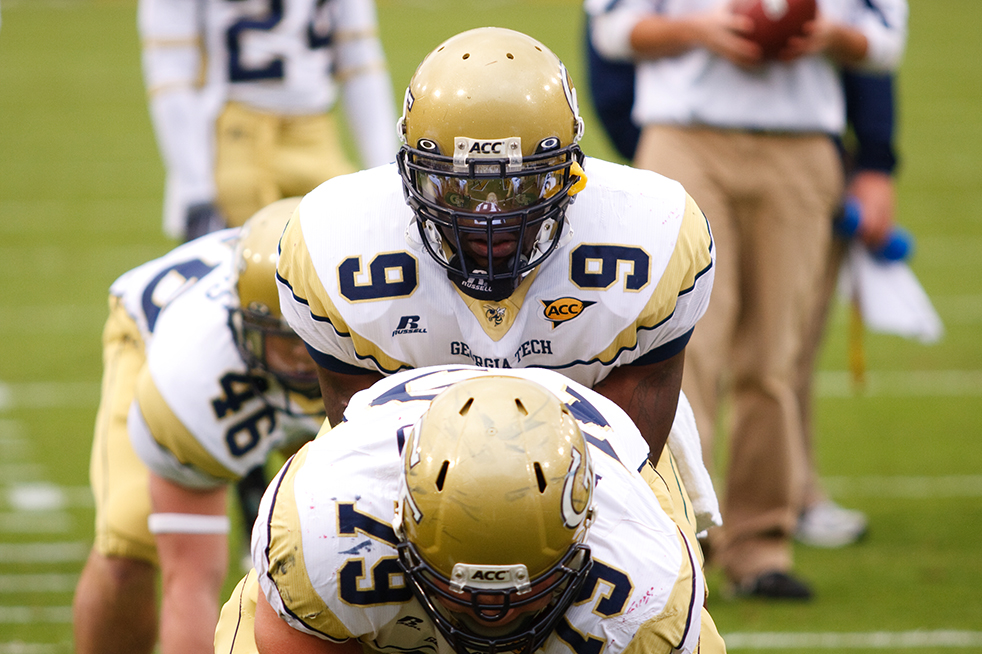Over the last few years, there has been a constant debate on the topic of paying college athletes. For most people arguing against it, you repeatedly hear, “Well they already go to school for free.” On the other end, those that argue for pay have a wide range of arguments including, “The college is making money off of them.” Well should they be paid? What will they be paid for?
College athletes, especially those in contact sports, risk their health and careers every game. In the NCAA, there are around 400,000 student-athletes and on average 12,500 injuries are reported every year. Note these are just those reported. Many injuries go unreported by the players and coaches. Some players continue to play through soreness and tightness in muscles. Playing through these small injuries eventually leads to big injuries. More often than not, it’s an injury that the player comes back from, but in some cases it’s not.
In his senior year at Tech, Joshua Nesbitt broke his arm in a game at VT. Due to this injury, he missed the remainder of the season. More recently, former University of Georgia quarterback Aaron Murray suffered a season ending injury and possibly, losing a chance to play in the NFL.
I know I speak for all college students when I say, it is no fun being a college student without money. Did you know that 86 percent of college athletes live below the poverty line? During the 2010-2011 school year, the average out of pocket expense for a full scholarship athlete, not counting the partial scholarships, was $3,222. Without an income, $3,000 in the hole is poverty.
No one wants to go through life or college living in poverty. Everyone tries to find ways to make money.
Hundreds of thousands of replica jerseys are sold every year in college bookstores, sport stores and department stores across this country. Jerseys are usually only sold because it’s a star player or they are a family member, maybe even best friend. When those individuals buy those replica jerseys, the store makes approximately 50 percent of the sale price.
In 2010, former UGA stand-out and current Cincinnati Bengals WR A.J. Green was suspended for the sale of his authentic jersey that he wore in the Independence Bowl that year. That year, with 22 different versions of No. 8, the average replica Green jersey sold for $60 in the UGA bookstore. $30 would go to the bookstore itself while only 10% of the remainder ($3) went to UGA.
The question now is this. When will colleges and the NCAA start supporting their athletes, instead of exploiting their talents for their own gain?
Colleges and major conferences are landing billion dollar television and multimedia contracts, but little or none of that money has been allocated to the athletes from whom they are make the money. With the growth in coverage such as the Big Ten Network, SEC Network and ACC Network, the worth of these players will grow. Duke basketball players are valued at $1,025,656. How much is given to the players? None.
If the NCAA will not pay the athletes their true values, why not pay them for their jersey sales? Well how much will that be? Let’s revisit A.J. Green’s situation. Paying the athletes means that names will have to go on the back of the jerseys. This would mean more money for Nike and all other uniform makers. This could possible increase the university income from 10 percent to 15 percent. If the athlete received half of the university’s profit they would make $2.25 per jersey. The best college athletes sale on average 1,500 jerseys (football) meaning they would make $3,375 per year.
I believe it is time for the NCAA to allow college athletes to get paid for jersey sales and other Team paraphernalia.
